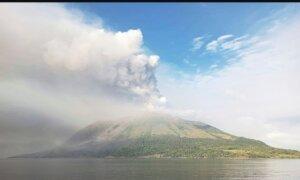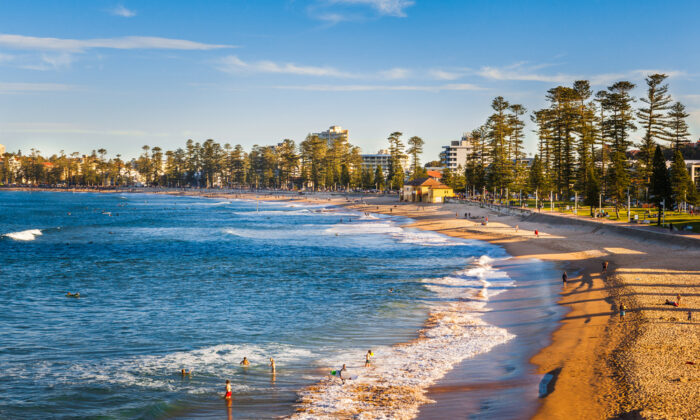80 grams of gold per day, in the form of particles measuring 20-60 micrometres are emitted by Mt Erebus and can be found in the atmosphere up to 1,000 km away.
A rare geological anomaly exists in the Antarctic, where the area’s highest and most southern active volcano is spewing out thousands of dollars in crystallised gold specks.
Mount Erebus’ emissions, reaching 3,794 metres high, include gases, steam, and boulders of partially molten rock.
There’s also a lava lake that has continued flowing unabated since 1972. The gas emanating from lava cools when it comes into contact with air, from around 1,000 degrees Celcius to 100 degrees, which precipitates metals including gold, but also copper, zinc, and phosphorous.
As a result, around 80 grams of gold per day, in the form of particles measuring 20-60 micrometres, are emitted. Once airborne, these particles can be flung up to 1,000 kilometres (620 miles) away from the mountain.
Located on Ross Island as one of three cornerstone volcanoes, Erebus was discovered on Jan. 27, 1841, by James Clark Ross and his crew and was named after the ship on which he sailed, HMS Erebus, the ancient Greek god of darkness. Its sister ship, HMS Terror, gave its name to another volcano 37 kilometres southeast of Erebus.
The mountain underwent survey in 1912 by a party from the famed Terra Nova expedition, helmed by adventurer Robert Falcon Scott.
Following proposals from the United Kingdom, New Zealand, and the United States, the team’s base and summit camps on Erebus have been afforded designation as historic sites by the Antarctic Treaty Consultative Meeting, an international body that established freedom of scientific investigation of the continent.
The volcano is part of the Pacific Ring of Fire, a region known for its frequent earthquakes and volcanic eruptions.
Mt Erebus is also of interest to scientists because of its unique lava composition, which contains a high concentration of alkali metals. This composition is thought to be related to the volcano’s location on the boundary between the Antarctic Plate and the Pacific Plate.
While the gold-making volcano has only recently made headlines in international news, researchers have known about the phenomenon for over 30 years.
A 1991 article in NewScientist Magazine speculated the gold may crystalise at the “crusty surface of the lava as the gas emerges. Gas is emitted fairly slowly at Mount Erebus, (compared with volcanoes outside Antarctica) so the particles could grow for minutes or hours before the gas carries them into the atmosphere.”
 A plume rises from Mount Erebus’s lava lake in the inner crater in 1983. (Bill Rose/Michigan Technological University/CC BY-NC-ND 4.0)
A plume rises from Mount Erebus’s lava lake in the inner crater in 1983. (Bill Rose/Michigan Technological University/CC BY-NC-ND 4.0)Continuously Erupting
Despite there being only three active volcanoes on the ice continent, there are over 130 that remain dormant.
Should they erupt, only limited time would be available for disaster planning due to a lack of monitoring stations and equipment.
Conor Bacon of Lamont-Doherty Earth Observatory at Columbia University in New York told Live Science “Erebus …has been continuously erupting since at least 1972.”
He added that only Erebus and Deception Island in the South Shetland Islands are equipped with “a small number of permanent monitoring instruments” that can detect seismic activity from volcanic unrest.
“From time to time, researchers will deploy more extensive networks of instruments to conduct specific studies, but this naturally comes with a huge number of logistical challenges when compared to the many, far more accessible, volcanoes elsewhere in the world,” Mr. Bacon said.
Uneconomical to Mine
While many active volcanoes emit gold, Erebus appears to be the only one emitting it as particles, which is of particular interest to vulcanologists.
However, any potential profiteering via mining would be uneconomic due to the mountain’s unforgiving terrain and international covenants on land use, and amateur prospectors would be stymied by the particle’s small size.
New Zealand GNS Senior Vulcanologist Geoff Kilgour told Newshub that gold hunters were unlikely to find large nuggets.
“So [the gold flakes] wouldn’t be a good use of anyone’s time,” he said.
NZ Flight Crash
Mt Erebus was the crash site of Air New Zealand Flight 901 in 1979. The flight was a sightseeing tour that departed from Auckland Airport and was operated using a McDonnell Douglas DC-10-30 aircraft.
The crash resulted in the deaths of all 257 people on board, making it the deadliest disaster in New Zealand’s history.
The disaster had a profound impact on New Zealand, leading to significant changes in the country’s aviation industry and regulatory framework.
It also sparked a lengthy legal battle between Air New Zealand and the families of the victims, as well as a national inquiry to determine the cause of the crash and identify measures to prevent similar accidents in the future.
The cause of the crash was initially attributed to pilot error, as the flight crew had been unaware of a change in the flight path coordinates.
However, subsequent investigations revealed that several factors contributed to the crash, including poor communication within the airline and inadequate oversight of the flight’s planning and execution.














 English (US) ·
English (US) ·  Turkish (TR) ·
Turkish (TR) ·